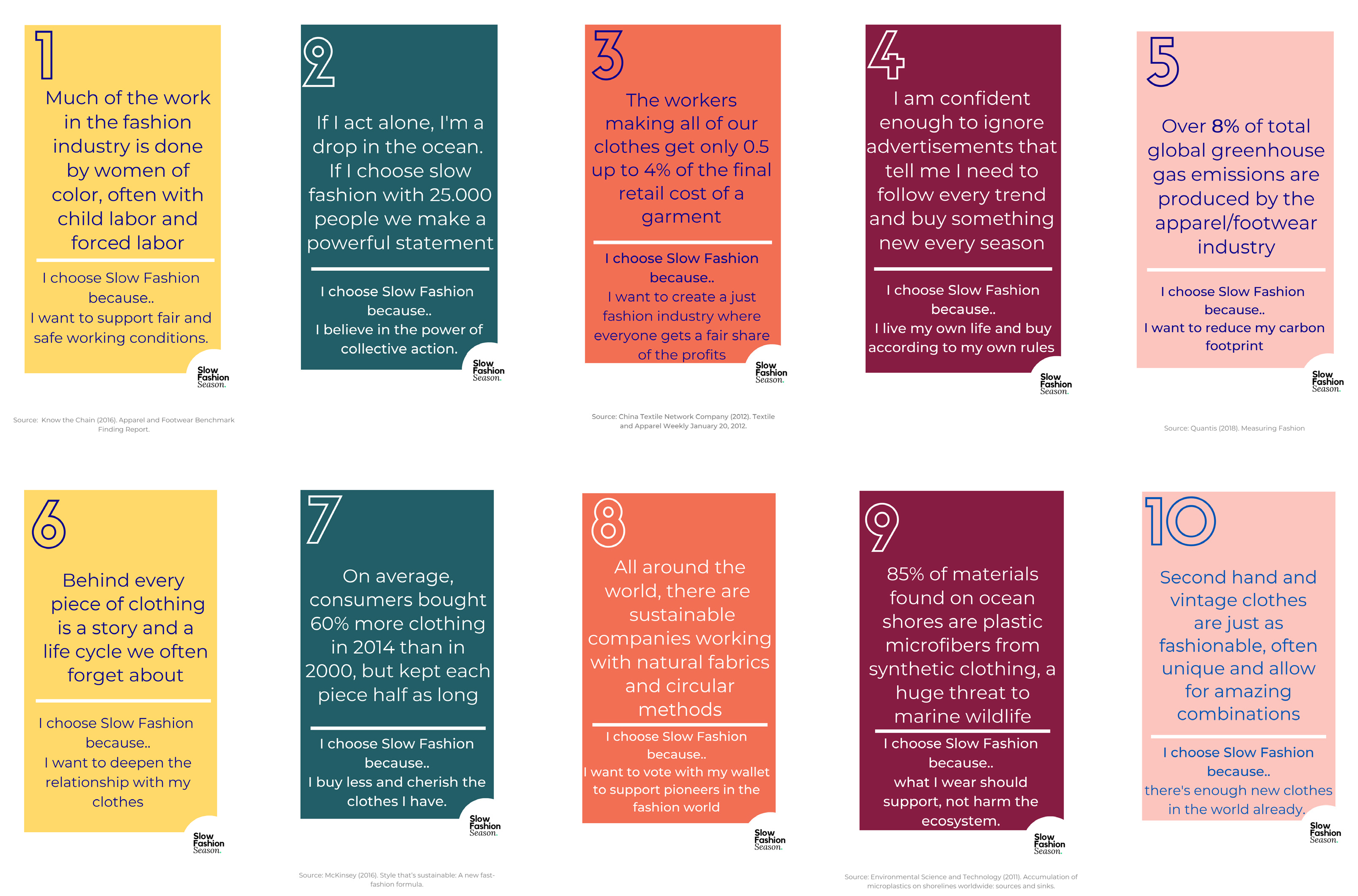Are you up for a Slow Fashion Season? To make conscious wardrobe choices for three months from June 21 to September 21 this year? It might mean buying nothing for three months; or swapping, upcycling or sewing your stash; buying second-hand and vintage; or supporting sustainable, local, small fashion labels if you find you really need something new.
Slow Fashion Season, a global challenge out of The Netherlands, which aims to have 25,000 people participate and together save the equivalent of up to 750 million litres of water and 2.5 million kgs of CO2 emissions through positive choices. We’d love you to sign up and be part of this collective action.
I personally committed to making conscious choices in my wardrobe forever after noticing fashion excess and setting up Textile Beat in 2013 to have conversations about textile waste. My personal actions for the next three months will be upcycling what I already own.
 The aim of Slow Fashion Season is to raise awareness about the fashion industry and how we, as wearers, play a role in it. We have the power to change the industry for the better. The campaign has adjusted to fit the current situation and instead of not buying anything new for three months, this year it’s all about making conscious choices. This includes supporting the small sustainable fashion labels that are going through a difficult time. But, always think twice before you buy.
The aim of Slow Fashion Season is to raise awareness about the fashion industry and how we, as wearers, play a role in it. We have the power to change the industry for the better. The campaign has adjusted to fit the current situation and instead of not buying anything new for three months, this year it’s all about making conscious choices. This includes supporting the small sustainable fashion labels that are going through a difficult time. But, always think twice before you buy.
I’m doing Slow Fashion Season for many reasons, including these 10:
- I want to support fair and safe working conditions
- I believe in the power of collective action
- The workers making clothes get less than 4% of the final retail cost of a garments
- I am confident enough to ignore advertisements and don’t need to follow trends
- I want to reduce my carbon footprint
- I want to deepen the relationship with my clothes
- I buy less and cherish the clothes I have
- I want to vote with my wallet to support pioneers in the slow fashion world
- What I wear should support, not harm, the ecosystem
- There’s enough new clothes in the world already
The fashion industry is historically responsible for enormous amounts of water consumption (32 million Olympic size swimming pools per year) and CO2 emissions (8% of global greenhouse emissions – and growing fast). Textile dyeing is the second largest polluter of clean water globally, only after agriculture. Then there is the enormous waste creation (148 million tons by 2030) and land use (115 million hectares by 2030), and often horrid labour conditions. Our choices make a difference. So think before buying, for three months and hopefully forever.